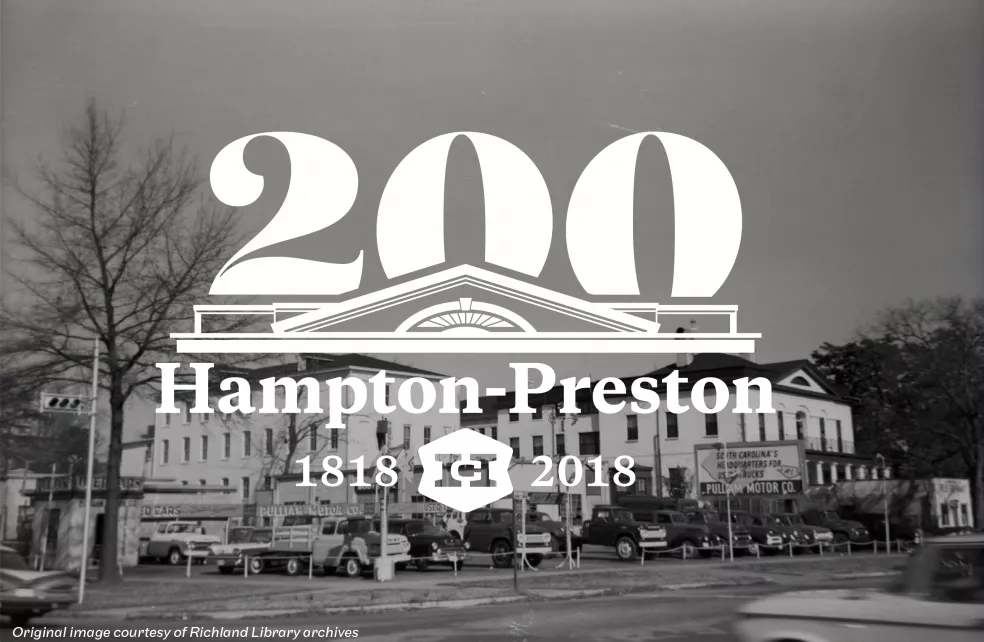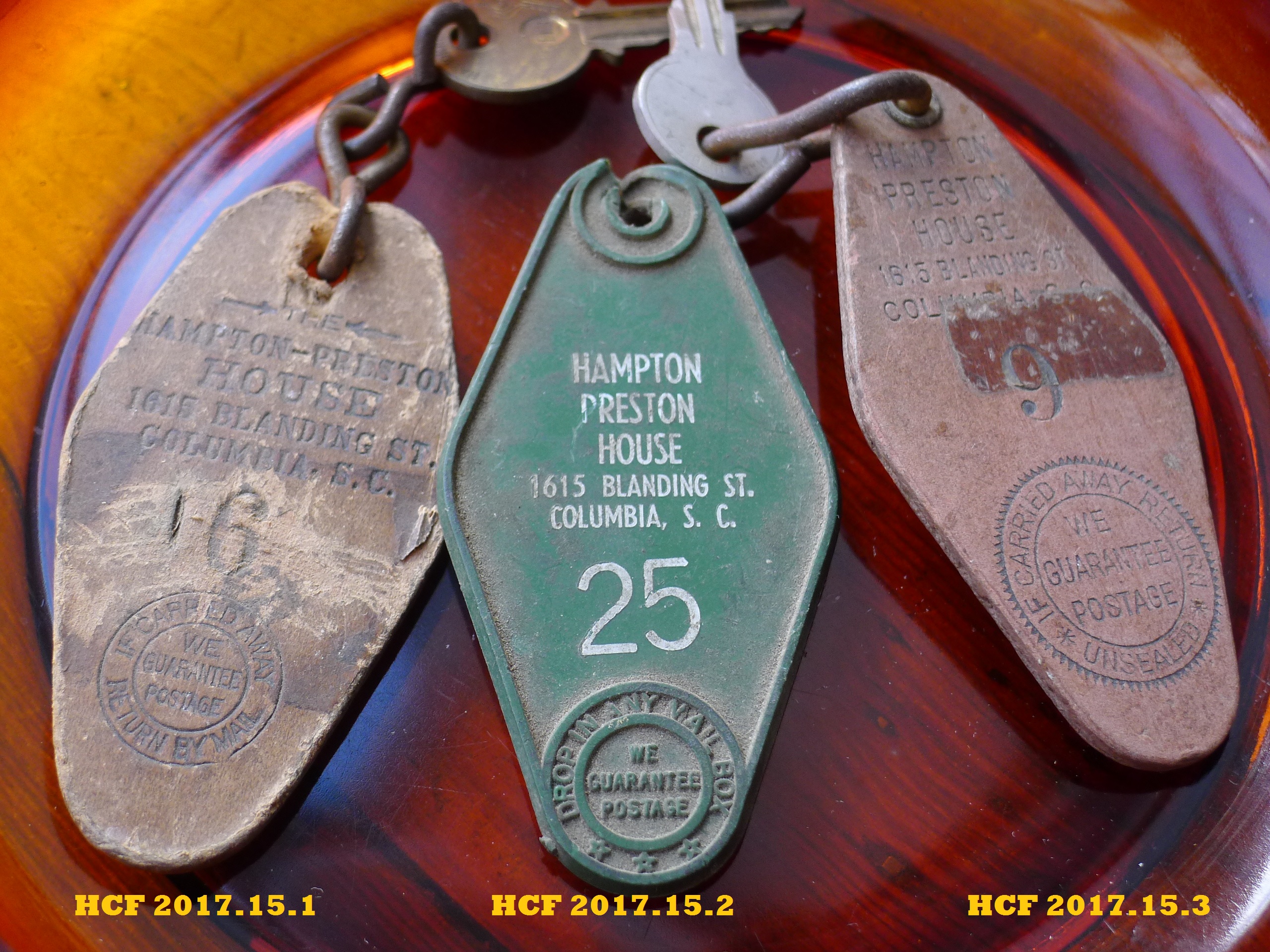Welcome to Columbia: Wish You Were Here?
Monday, March 26th 2018

In November 1943, local real estate developer and lawyer Thomas Hair bought the former Hampton-Preston estate, which had been placed to many uses since Chicora College left Columbia nearly 15 years earlier. Banking on the property’s widely known association with members of Columbia’s and South Carolina’s most elite families, Hair repurposed the former antebellum destination as a tourist home with the goal of bringing back the “hospitality of the Old South,” as reported by The State newspaper. Hair’s targeted patronage was white travelers who either could not afford or chose not to stay at more expensive downtown hotels.
Following rehabilitation of the aged structure, Hair opened his tourist home on March 11, 1944 with his friend, Maggie P. Campbell, as serving as its manager/hostess. The mansion’s 25 rooms were now in “excellent condition” and exuded “old South charm” through their homey furnishings, which included an array of older “antique” pieces. As others owned the surrounding parcels that were once part of the estate, Hair could not, however, realize his further goal of returning the property’s once-famous gardens to their 19th-century splendor.

During its time in operation, the Hampton-Preston Tourist Home was one of a handful of other similar accommodations. Others included the Blanding Tourist Home at 1528 Blanding Street (across the street to the southeast); the Martha Washington Tourist Home at 1615 Gervais Street and Gilliam’s Tourist Home. Like other white-owned hotels and motels in Columbia, all were racially segregated, in accordance with Jim Crow laws. Though barred from the Hampton-Preston Tourist Home and similar accommodations, African American travelers could find shelter and meals in places highlighted in the Negro Travelers Greenbook, which provided helpful tips for safe journeys during segregation. Among the Columbia venues for black travelers were the Cornwall and Smith tourist homes. By the later 1950s, Hair’s venture, while remaining segregated, nonetheless assumed more of a boarding house format. By 1966, home, bearing signs of heavy use and deferred maintenance closed to visitors.
Today, the memory of the Hampton-Preston Tourist Home remains vivid among some Columbians who lived there or recalled others who did. Historic Columbia’s inclusion of this aspect of the former Hampton-Preston estate’s past in tours of the property helps tie present-day tourists and visitors to the properties with others who found their way there more than two generations ago
Learn more about the 200th anniversary of the Hampton-Preston Mansion.